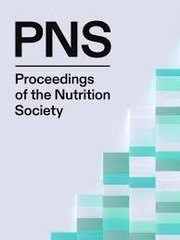No CrossRef data available.
Article contents
Understanding and applying food systems approaches to improve dietary health
Published online by Cambridge University Press: 02 April 2025
Abstract
Systems thinking is deeply rooted in history, as far back as Aristotle. However, it has only relatively recently reemerged as an approach to help us understand and intervene in health and food systems. This is particularly salient, given its impact on environmental and population health. Whilst global food is abundant, many people cannot access affordable, healthy and culturally appropriate food. On the other hand, foods of low nutrient density are widely available. Food systems are complex and require complex thinking and approaches that allow us to consider the influence of multiple factors and how the might system respond to change. In turn, this enables the identification of ‘leverage’ points, where policies or interventions are most likely to have a sustained impact. The Foresight obesity map inspired others to adopt systems approaches to help understand the broader social, economic, environmental determinants of obesity to support intervention/policy development. Evaluation of these requires a consideration of complexity to explore why intervention goals may or may not have been successful and how relationships between components or approaches can be enhanced to support implementation and thereby increase the potential for effectiveness. Overall, approaches to understand, intervene, govern and evaluate food systems must themselves be sufficiently complex, or will ultimately be destroyed by the system it seeks to improve. This review paper aims to introduce readers to the application of systems approaches in research within the context of food systems and health, including its traditional/historical origins.
Keywords
- Type
- Review Article
- Information
- Copyright
- © The Authors 2025. Published by Cambridge University Press on behalf of The Nutrition Society


